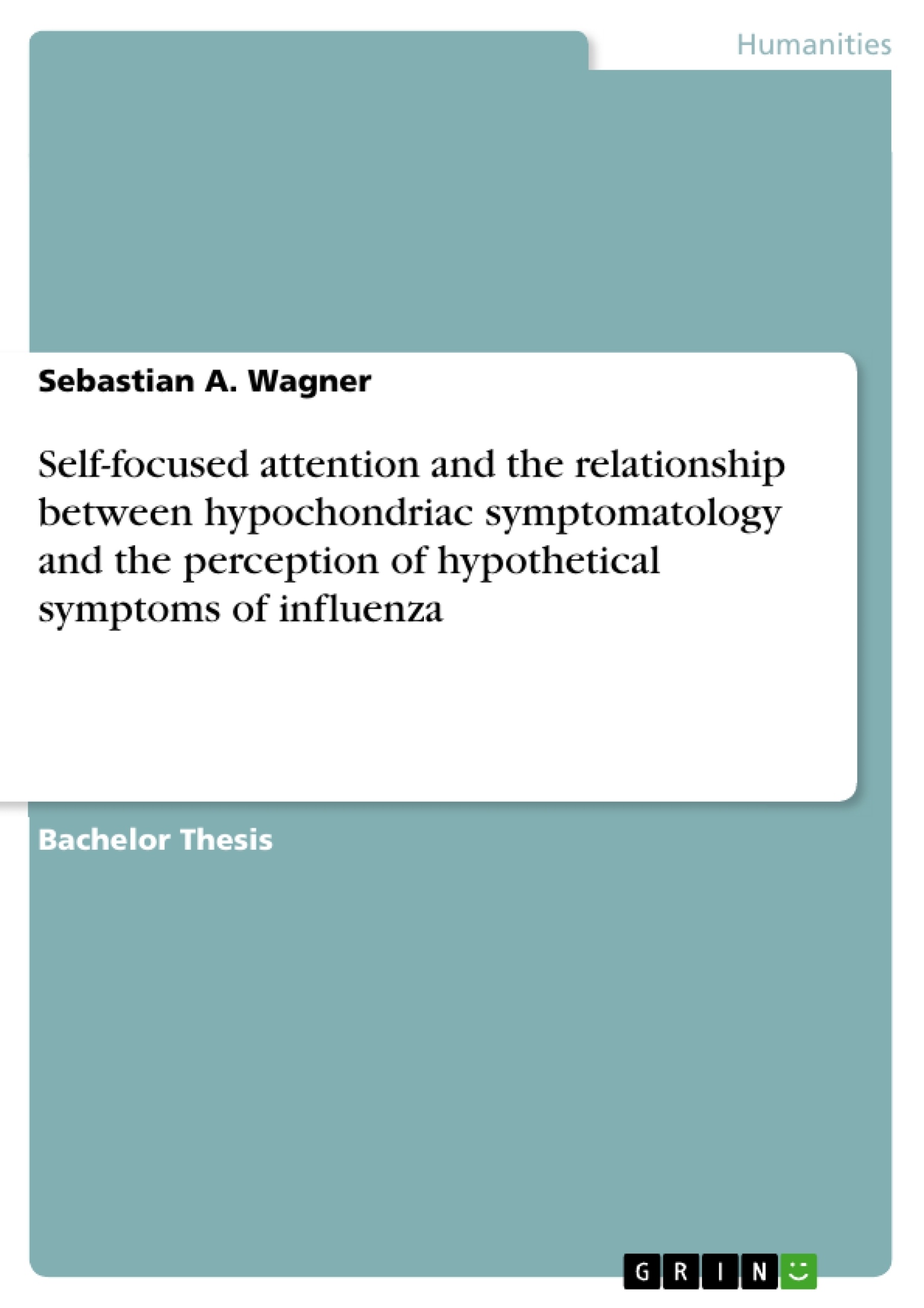This study tested the hypothesis that people scoring highly on hypocondriasis (measured by the Illness Attitude Scale; Kellner, 1986), perceive it most intensely (measured by the Revised Illness Perception Questionnaire; Moss-Morris et al., 2002) when they receive a self-focused attention manipulation. One hundred and seventy students either received a treatment increasing their self-focused attention, or a neutral treatment. After that, they were exposed to a health-message about influenza. It was found that the hypothesis was not supported. Unexpectedly, self-focused people scoring high on hypocondriasis perceived the hypothetical influenza illness less intensively on some dimensions, whilst low scorers perceived symptoms more intensively under high self-focus. It is suggested that self-focused attention might activate a defence mechanism in people scoring high on hypocondriasis, where symptoms are perceived less intensely. In conclusion, this research should be replicated in order to verify the unexpected findings.
Inhaltsverzeichnis (Table of Contents)
- Abstract
- Introduction
- Method
- Design
- Participants
- Materials
- Procedure
- Results
- Discussion
- References
Zielsetzung und Themenschwerpunkte (Objectives and Key Themes)
This study aims to investigate the relationship between self-focused attention and the perception of hypothetical influenza symptoms in individuals with varying levels of hypochondriacal symptomatology. The study specifically tests the hypothesis that individuals with high hypochondriasis scores will perceive hypothetical influenza symptoms more intensely when subjected to a self-focused attention manipulation.
- The influence of self-focused attention on the perception of hypothetical illness symptoms
- The relationship between hypochondriacal symptomatology and the intensity of perceived illness symptoms
- The potential role of defense mechanisms in modulating symptom perception among individuals with high hypochondriasis scores
- The prevalence and impact of subclinical hypochondriasis in the general population
- The need for further research to replicate and validate the unexpected findings of the study
Zusammenfassung der Kapitel (Chapter Summaries)
The introduction provides an overview of hypochondriasis, its definition, and its classification as a somatoform disorder. The chapter discusses the prevalence of hypochondriasis in both clinical and non-clinical populations, highlighting the existing gaps in research regarding the incidence of hypochondriasis in non-clinical samples. The chapter also emphasizes the significance of studying hypochondriasis in non-clinical populations, given the prevalence of subclinical hypochondriasis and the potential for developing targeted interventions.
The method section outlines the design, participants, materials, and procedure employed in the study. The study uses a self-focused attention manipulation and a health message about influenza to investigate the relationship between hypochondriasis, self-focused attention, and perceived illness symptoms.
Schlüsselwörter (Keywords)
The main keywords and focus topics of the text are hypochondriasis, self-focused attention, illness perception, hypothetical symptoms, influenza, somatoform disorders, health anxiety, prevalence, subclinical hypochondriasis, and defense mechanisms. The text also highlights the importance of further research to validate the unexpected findings and provide a more comprehensive understanding of the complex relationship between these factors.
- Quote paper
- Dipl.-Psych. (Univ.) - B.Sc. (F.C. Hon.) in Psych. Sebastian A. Wagner (Author), 2008, Self-focused attention and the relationship between hypochondriac symptomatology and the perception of hypothetical symptoms of influenza, Munich, GRIN Verlag, https://www.hausarbeiten.de/document/170764


